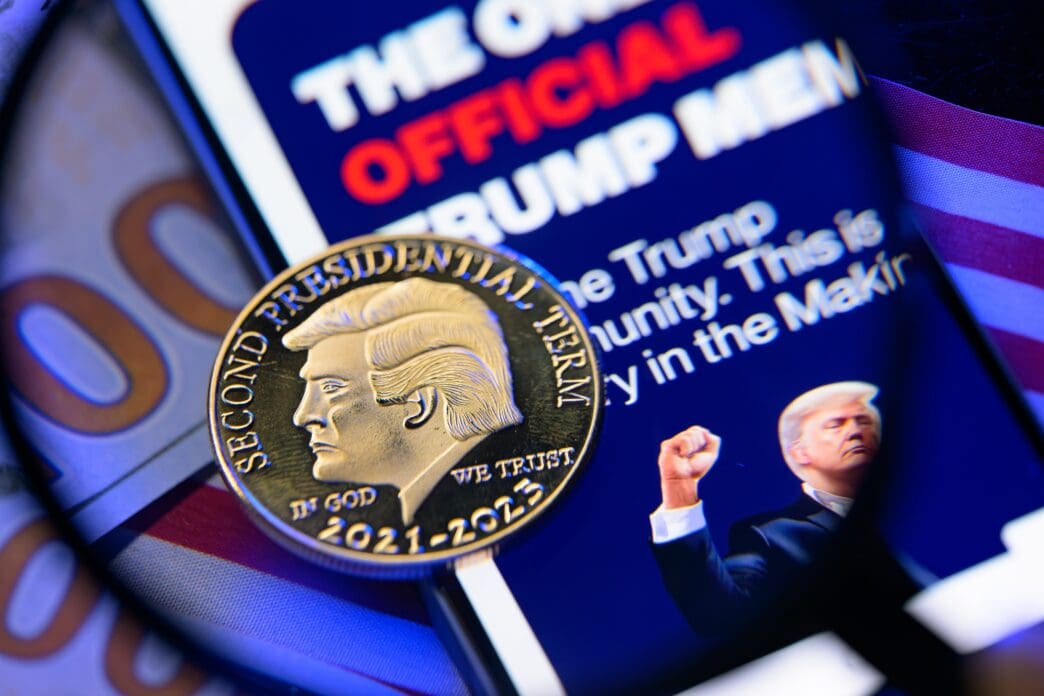Executive Summary
- Bitcoin demonstrated relative strength with a 2% gain, while gold experienced a 10% decline from its peak, leading to suggestions of a potential “catch-up trade” for Bitcoin.
- Gold’s recent 10% pullback is attributed to easing geopolitical tensions, trade frictions, and profit-taking, with experts cautioning that its consolidation phase might extend longer than historical averages.
- A Solana-based meme coin associated with President Trump rallied 46% amid easing macro pressures, following previous instances where Trump’s actions significantly impacted crypto markets.
The Story So Far
- The current market divergence, with Bitcoin showing resilience while gold declines, is attributed to easing geopolitical tensions and profit-taking affecting gold, alongside a historical lead-lag relationship between the two assets. This dynamic is further influenced by President Trump’s significant impact on crypto markets, as past tariff threats caused volatility and recent easing of macro pressures linked to him has driven rallies in associated meme coins, underscoring his continued influence on specific digital assets and broader market sentiment.
Why This Matters
- The current divergence between Bitcoin’s relative strength and gold’s recent decline suggests a potential “catch-up trade” for Bitcoin, driven by distinct demand dynamics from ETFs and higher-risk investors, even as gold faces a longer consolidation period due to easing geopolitical tensions and strong U.S. equities. This market dynamic, alongside President Trump’s continued, albeit indirect, influence on crypto sentiment as evidenced by a rally in a related meme coin, underscores the complex interplay of macroeconomic factors and political figures in shaping the digital asset landscape, with both assets anticipated to remain bullish but on different trajectories.
Who Thinks What?
- Tim Sun, Senior Researcher at HashKey Group, attributes gold’s recent pullback to easing geopolitical tensions and profit-taking, suggesting its consolidation phase might be prolonged due to strong U.S. equity returns, while projecting a “range-higher” trajectory for Bitcoin driven by recovering macro liquidity.
- Ryan McMillin, chief investment officer at Merkle Tree Capital, cautions against expecting a swift rebound for gold and believes Bitcoin’s current resilience, following gold’s pause, creates an opportunity for it to rally as it enters a phase of institutional adoption.
- An unnamed analyst speculates that the recent 46% rally in the Solana-based meme coin associated with President Trump is a “relief rally” stemming from the easing of macro pressures linked to Trump.
Bitcoin has demonstrated relative strength this week, remaining 2% up, while gold has experienced a notable 10% decline from its recent peak over the past six days. This divergence in performance has led some experts to suggest a potential “catch-up trade” for Bitcoin, even as a Solana-based meme coin associated with President Trump saw a significant rally of 46% amid easing macro pressures.
Gold’s Pullback and Historical Context
The precious metal’s recent pullback is attributed to a partial easing of geopolitical tensions, trade frictions, and profit-taking, according to Tim Sun, Senior Researcher at HashKey Group. Historically, gold has seen only ten instances in the past 45 years where it dropped 10% in six days, typically recovering these losses within approximately two months with an average rebound of about 8%.
However, Ryan McMillin, chief investment officer at crypto fund manager Merkle Tree Capital, cautions that a swift rebound for gold should not be the base case this time. Sun echoed this, suggesting that gold’s consolidation phase might extend longer than in previous episodes, partly due to strong U.S. equity returns driven by the ongoing AI cycle.
Bitcoin’s Relative Strength and Market Dynamics
The “lead-lag relationship” between gold and Bitcoin suggests that when gold takes a breather, Bitcoin often sees upward movement. This dynamic is currently in play, with Bitcoin showing resilience as gold retreats. McMillin believes this pause in gold’s momentum could create an opportunity for Bitcoin to rally.
Despite the potential for a “catch-up trade,” Sun highlighted fundamental differences in demand drivers. Gold demand is predominantly from sovereign wealth funds, central banks, and conservative asset managers, whereas Bitcoin flows are largely fueled by exchange-traded funds (ETFs) and investors with a higher risk appetite.
President Trump and Market Impact
President Donald Trump’s past actions have significantly impacted crypto markets. His threat to impose 100% tariffs on China is widely believed to have caused a flash crash on October 10, which wiped out an unprecedented $19 billion in open interest across crypto markets and led to a sharp drop in spot prices.
More recently, a Solana-based meme coin officially associated with Trump experienced a 46% rally over the past week, boosting its market capitalization to $1.67 billion. This surge is speculated by one analyst to be a “relief rally,” as some of the macro pressures linked to Trump appear to be easing. The token had previously hit an all-time low market cap of nearly $1 billion following a downward trend since a crypto dinner for top holders in May, coinciding with the aforementioned tariff threats.
Outlook for Both Assets
Looking ahead, both experts maintain a cautiously bullish stance on Bitcoin in the near term. McMillin anticipates that the leading cryptocurrency is entering a phase of institutional adoption and increased liquidity, which could propel its next growth cycle. Sun projects a “range-higher” trajectory for Bitcoin, supported by a gradual recovery in macro liquidity.
For gold, Sun expects a “choppy, upward-sloping path,” underpinned by widening global fiscal deficits and a consistent stream of risk events. The distinct market drivers and investor bases for gold and Bitcoin suggest that while their short-term performances may diverge, both assets are navigating complex macroeconomic landscapes.







